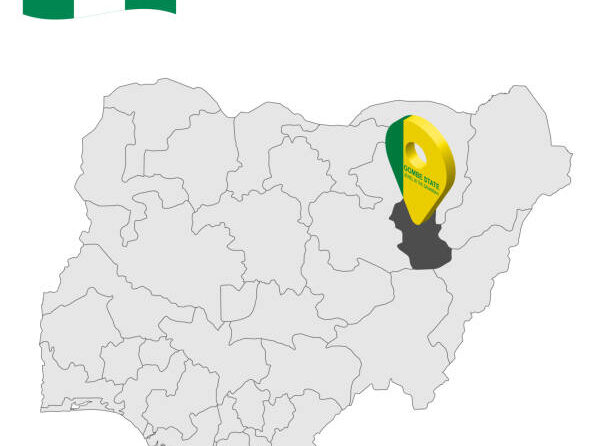Climate change is an undeniable reality that has far-reaching implications across the globe. It refers to the long-term alteration of temperature and typical weather patterns in a place. These changes can be attributed to natural processes, human activities, or a combination of both. In recent decades, the influence of human-induced factors, particularly the emission of greenhouse gases, has accelerated the pace of climate change.
The ramifications of this shift in our planet’s climate extend to numerous sectors, and one of the most affected is the fishing industry. Fisheries play a crucial role in the world economy, providing livelihoods for millions and supplying a significant portion of the global population with their primary source of protein.
This study aims to delve into the multifaceted impact of climate change on fish populations and the subsequent challenges it imposes on traditional fishing practices. Moreover, it will explore the promising investment opportunities that lie in adaptation and mitigation strategies.
Before we embark on our exploration of the impact of climate change on fisheries, it’s essential to grasp the pivotal role that this industry plays in our world. Fisheries not only contribute significantly to global food security but also form the backbone of numerous coastal communities, particularly in developing nations.
In addition to being a vital source of sustenance and employment, the fisheries sector is intertwined with cultural heritage and traditions for countless communities. It fosters a deep connection between humans and their natural environment, shaping identities and ways of life.
With these critical aspects in mind, it becomes imperative to scrutinise how climate change is reshaping this foundational industry, and what measures can be taken to ensure its sustainability in the face of mounting challenges.
Effects of Climate Change on Fish Populations
Adapting to a Changing Environment
The intricate balance of marine ecosystems is under siege as our planet’s climate continues to evolve. Rising temperatures, ocean acidification, and alterations in ocean circulation patterns are among the key drivers reshaping the lives of aquatic organisms, particularly fish.
A Temperature Tug-of-War
One of the most conspicuous effects of climate change on fish populations is the relentless rise in ocean temperatures. As the mercury climbs, fish are forced to adapt or relocate in search of suitable habitats. This shift in thermal dynamics has profound implications for their physiology, reproduction, and overall life cycles.
For many species, the increase in temperature leads to accelerated metabolic rates. While this may initially result in heightened growth, it also demands a greater supply of food. With altered prey availability, some species may struggle to meet these heightened energy demands, potentially leading to diminished populations.
Acidification: The Silent Threat
Ocean acidification, a consequence of increased levels of atmospheric carbon dioxide, poses an equally pressing challenge. Elevated CO2 levels dissolve in seawater, resulting in a decrease in pH levels. This altered chemical composition can hinder the growth and survival of crucial marine organisms, including the plankton that form the base of the oceanic food web.
For fish, acidification can lead to disruptions in their sensory abilities, affecting their capacity to navigate, locate prey, and evade predators. Additionally, it can impede the development of juvenile fish, potentially leading to reduced recruitment and ultimately impacting adult population sizes.
Shifting Currents, Shifting Fortunes
Changes in ocean circulation patterns, driven by shifts in temperature and salinity, have far-reaching consequences for fish distribution and migration. Nutrient-rich currents that sustain thriving ecosystems may be diverted, leaving areas previously teeming with marine life barren.
These altered circulation patterns also disrupt established migration routes, compelling fish to seek out new territories. This can lead to conflicts with other species, changing predator-prey dynamics, and potentially resulting in unforeseen impacts on entire ecosystems.
In this rapidly evolving environment, fish are faced with a daunting challenge: to adapt swiftly to their changing surroundings or face the risk of population decline and even extinction. As we navigate the complex web of climate-induced alterations, understanding these effects is paramount in crafting effective strategies for the future of fisheries.
Challenges to Traditional Fishing Practices
Navigating Uncharted Waters
The traditional practices that have sustained fishing communities for generations are now facing unprecedented challenges due to the rapidly changing climate. As fish populations adapt to new environments and behaviours, fishermen are compelled to adjust their strategies and expectations.
Caught in a Shifting Net: Altered Catch Composition
One of the most palpable shifts for fishermen is the changing composition of their catches. Species that once thrived in familiar fishing grounds may dwindle, while others previously considered rare sightings become increasingly common. This unpredictability can make it difficult for fishermen to plan their operations and can lead to economic uncertainty.
Furthermore, the rise of invasive species, propelled by changing ocean conditions, can further complicate matters. These newcomers can outcompete native species, disrupting established ecological balances and challenging the sustainability of fishing practices.
Spawning Confusion: Disruption of Fishing Seasons
Climate-induced alterations in ocean temperatures and circulation patterns have a direct impact on fish spawning seasons. Traditional fishing calendars, meticulously refined over generations, may no longer align with the biological rhythms of target species.
As spawning times become increasingly erratic, fishermen face the dilemma of whether to adapt their practices to these new patterns or risk missing out on crucial harvests. This unpredictability introduces a level of uncertainty that can significantly impact the economic stability of fishing communities.
Economic Ripples: The Toll on Fishing Communities
The challenges posed by climate change ripple through fishing communities, affecting not only fishermen but also the supporting industries and local economies that depend on a thriving fisheries sector. Fluctuations in catch sizes and composition can lead to income instability for fishermen, making it difficult to plan for the future.
Moreover, communities that rely heavily on fishing may find themselves at a crossroads, forced to diversify their livelihoods or face economic hardship. The cultural and social fabric of these communities, intricately woven with the fishing industry, is also at risk of unravelling.
In this dynamic and uncertain landscape, it is imperative for both policymakers and stakeholders to collaborate on strategies that ensure the resilience of traditional fishing practices. By acknowledging the challenges and working towards innovative solutions, we can strive to safeguard the livelihoods of those who depend on the sea for their sustenance and well-being.
Adaptation and Mitigation Strategies

Charting a Course Towards Sustainability
As the effects of climate change continue to reshape the world’s oceans, the fishing industry must adapt to ensure its long-term viability. This calls for a proactive approach that combines sustainable practices, technological innovation, and policy changes.
Sustainable Fishing Practices: A Balancing Act
Implementing catch quotas and establishing sustainable fishing practices are crucial steps in mitigating the impact of climate change on fish populations. By setting limits on the amount of fish that can be harvested, we can help ensure that stocks remain at healthy levels and avoid overexploitation.
Additionally, adopting selective fishing gear that targets specific species while minimising bycatch can contribute to the preservation of non-targeted species and the overall health of marine ecosystems. These practices promote a balanced and resilient fishing industry that can weather the challenges posed by a changing climate.
Diversification of Fishing Techniques
In the face of shifting environmental conditions, diversifying fishing techniques can provide a buffer against uncertainty. Exploring the potential of aquaculture, for example, allows for the controlled production of fish in controlled environments. This can help meet growing demand while reducing pressure on wild fish populations.
Integrating technology into fishing operations also holds promise. From advanced sonar systems for improved fish detection to data-driven analytics for more accurate stock assessments, innovation can enhance the efficiency and sustainability of fishing practices.
Policy and Regulation Changes: Navigating the Legal Landscape
The implementation of forward-thinking policies and regulations is instrumental in safeguarding the future of fisheries. Establishing protected marine areas and regulating fishing activities within them can provide critical sanctuaries for fish populations to thrive and reproduce.
Furthermore, carbon pricing mechanisms specific to the fishing industry can incentivize the adoption of low-impact practices and promote a transition towards greener, more sustainable operations.
By combining these strategies, we can forge a path towards a fisheries industry that is not only resilient to the challenges of climate change but also actively contributes to the restoration and preservation of marine ecosystems.
Investment Opportunities in Adaptation and Mitigation
Green Ventures: Investing in a Sustainable Future
As the imperative to address climate change intensifies, the fisheries sector presents a range of compelling investment opportunities. These ventures not only contribute to the resilience of the industry but also align with broader sustainability goals.
Research and Development in Aquaculture
Aquaculture, often referred to as “aquatic farming,” represents a burgeoning field with immense potential. By cultivating fish in controlled environments, aquaculture offers a sustainable alternative to traditional fishing. Investing in research and development in this sector can lead to innovations in breeding techniques, feed formulations, and disease management, thereby enhancing the efficiency and environmental sustainability of aquaculture operations.
Innovation in Sustainable Fishing Technologies
Technological advancements are revolutionising the fishing industry, offering solutions to mitigate its environmental footprint. Investment in innovations like more selective fishing gear, which reduces bycatch and minimises harm to non-target species, can drive progress towards a more sustainable and responsible fishing sector.
Additionally, the development of autonomous underwater vehicles (AUVs) equipped with advanced sensors enables precise mapping of fish populations and their habitats. This data-driven approach empowers fishermen with real-time information to make informed decisions, enhancing the overall efficiency and sustainability of their operations.
Green Financing for Fisheries
Financial institutions and investors are increasingly recognizing the value of sustainable practices in the fisheries sector. Green financing mechanisms, such as loans and grants earmarked for eco-friendly initiatives, provide crucial support for projects that prioritise environmental stewardship. These investments not only yield financial returns but also contribute to the long-term viability of the fisheries industry.
By directing capital towards ventures that prioritise sustainability, investors can play a pivotal role in driving positive change within the fisheries sector. These investments not only foster economic growth but also contribute to the broader goal of creating a more resilient and ecologically sound future.
Conclusion
As we delve into the intricate web of interactions between climate change and fisheries, it becomes evident that we stand at a critical juncture. The repercussions of our actions, or inactions, are far-reaching, impacting not only the marine ecosystem but also the livelihoods of millions around the globe.
Rising sea temperatures and ocean acidification are reshaping the very foundations of our fisheries. Species once abundant in familiar waters are migrating, seeking refuge in cooler currents. Coastal habitats, nurseries for countless species, are succumbing to the relentless advance of rising tides.
Yet, in the face of adversity, there is hope. Through adaptive measures and sustainable practices, we can bolster the resilience of our fisheries. Communities, governments, and industries can work hand in hand to forge a path towards a more sustainable future.
International cooperation and forward-thinking policies are key components of this journey. Together, we must craft agreements that transcend borders, recognizing that the health of our oceans knows no bounds.
As consumers, we also hold tremendous power. Our choices at the market can steer the course towards sustainable seafood options, supporting those who practice responsible fishing.
In the face of this global challenge, unity and collective action are our greatest allies. Let us take heed of the lessons learned from the past, and together, navigate the uncharted waters of a changing climate.












